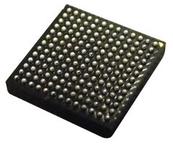Introduction
●The TPS65951 device is a power-management IC for mobile cellular handsets powered by a Li-ion, Li-ion polymer, or cobalt-nickel-manganese cell battery. It can be connected to an application processor and/or a modem. This optimized power-management IC is designed to support the specific power requirements of the OMAP processor devices. The TPS65951 contains several buck converters, low dropout (LDO) regulators, battery charger interface, and a host of other features and functions. The audio portion of the TPS65951 is an entire audio module with audio codecs, digital filters, input preamplifiers/amplifiers, and class D output amplifiers.
●This TPS65951 Data Manual presents the electrical and mechanical specifications for the TPS65951 device. It covers the following topics:
●• A description of the TPS65951 terminals: assignment, multiplexing, electrical characteristics, and functional description (see Section 2)
●• A presentation of the electrical characteristic requirements: maximum and recommended operating conditions, digital I/O characteristics (see Section 3)
●• The clock specifications: clock slicer, input and output clocks (see Section 4)
●• The audio/voice module with the electrical characteristics and the application schematics for the downlink and uplink path (see Section 5)
●• The power module including the power provider, power references, power control, the power consumption, and the power management with the sequence on and off (see Section 6)
●• The timing requirements and switching characteristics (ac timings) of the interfaces (see Section 7)
●• The battery charger interface (see Section 8)
●• A description of different modules: MADC and LED drivers (see Section 9 and Section 10)
●• The deboucing time (see Section 11)
●• A description of the external components for the application schematics (see Section 12)
●• The thermal resistance characteristics, device nomenclature, and mechanical data about the available packaging (see Section 13)
●• 1 A glossary of acronyms and abbreviations used in this data manual (see Section 14)


